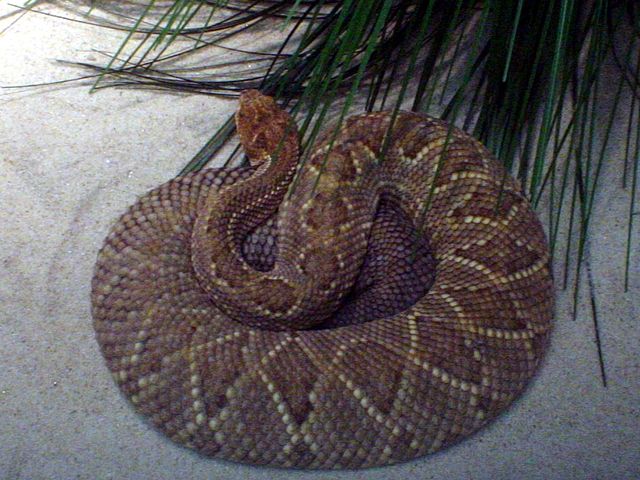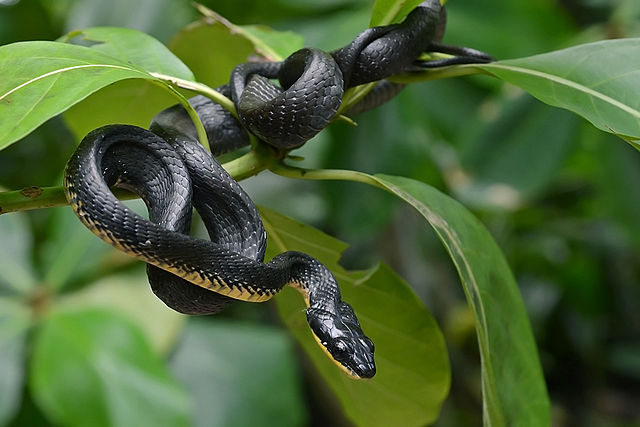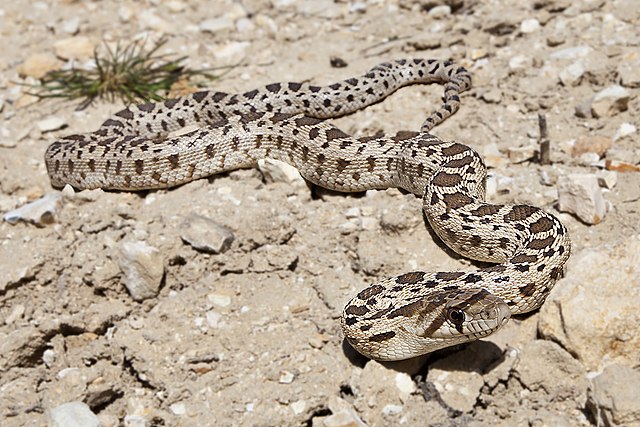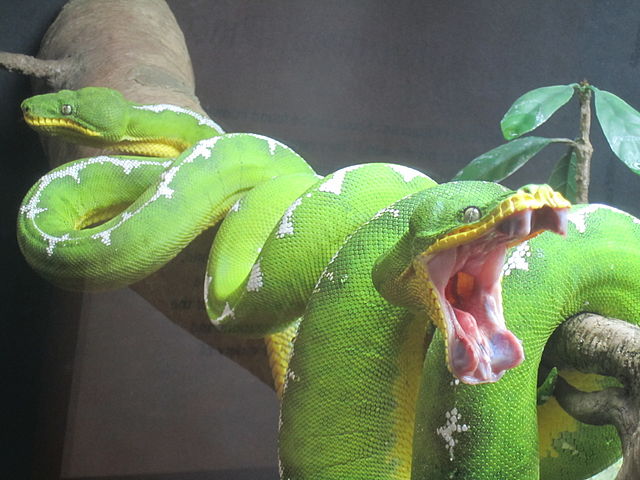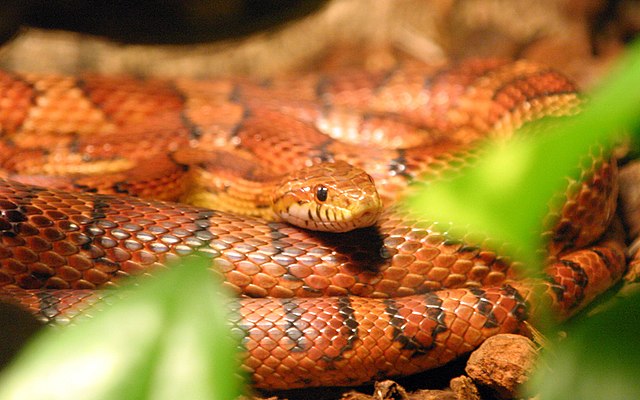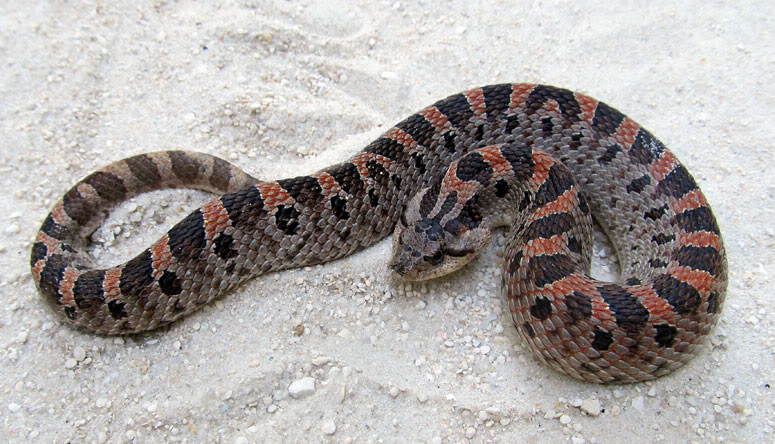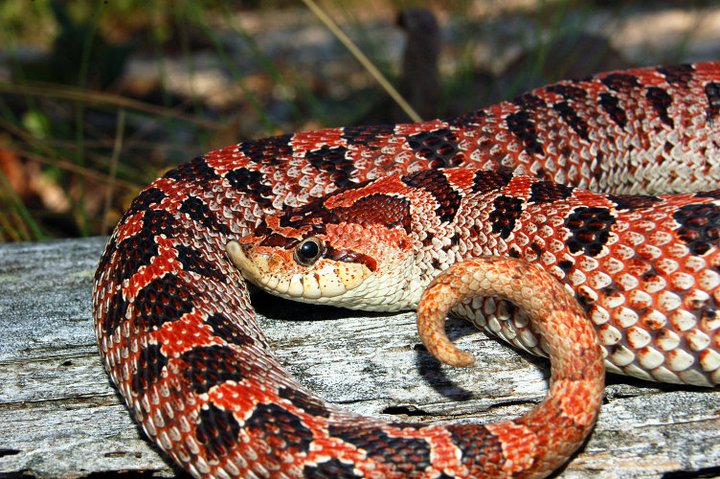We just learned about the Black Rat Snake.
Another type of snake is the Jamaican Boa.
This snake is not venomous, it is a boa so it uses its body to crush prey.
It is golden yellow around the head and middle, with black zig zags, and it turns black towards the tail.
It can grow up to around 6 feet.
The forest where these snakes live is being destroyed, so there are not many of them left.

(from: wikipedia - jamaican boa)
Kid Facts - Blast from the past: German Shepherd



